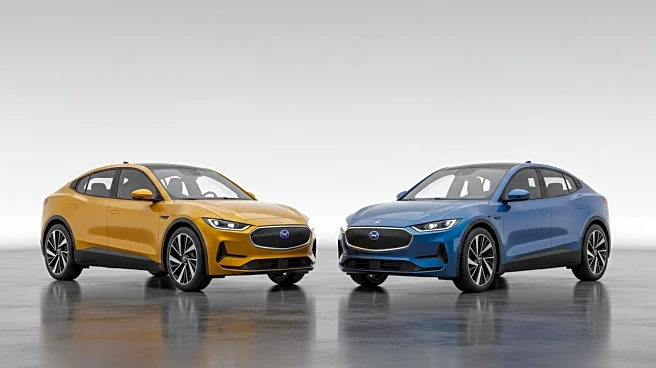What is the story about?
What's Happening?
Hyundai Motor Company and General Motors (GM) have unveiled their first co-developed vehicles for the Americas, marking a significant collaboration in cross-brand manufacturing. The partnership will produce four models for Central and South America, including a compact SUV, compact car, compact pick-up, and mid-size pick-up, with options for internal combustion and hybrid powertrains. Additionally, an electric commercial van will be developed for the North American market. Production is expected to reach 800,000 units annually, with the first models launching in 2028.
Why It's Important?
The collaboration between Hyundai and GM represents a strategic move to enhance manufacturing efficiency and meet diverse market demands. By sharing platforms and resources, the companies aim to reduce costs and streamline production processes. The partnership also reflects a commitment to sustainability, with plans to explore low-carbon emissions steel production. This initiative aligns with broader industry trends towards decarbonization and could influence supply chain practices across the automotive sector.
What's Next?
Hyundai and GM will continue to develop their co-manufactured vehicles, focusing on flexible platforms to accommodate various powertrains. The companies will initiate joint sourcing programs to optimize procurement and reduce costs. As production ramps up, the collaboration may expand beyond the Americas, potentially influencing global automotive markets. The partnership's success could lead to further joint ventures in propulsion systems, including battery electric and hydrogen fuel cell technologies.
Beyond the Headlines
The Hyundai-GM collaboration highlights the growing trend of cross-brand partnerships in the automotive industry. By leveraging shared resources and expertise, manufacturers can enhance innovation and competitiveness. The focus on sustainability and low-carbon emissions reflects a broader industry shift towards environmentally friendly practices. This partnership may set a precedent for future collaborations, influencing global manufacturing strategies and supply chain dynamics.
AI Generated Content
Do you find this article useful?
















